Mengjuan Chen
A Novel Dynamic Light-Section 3D Reconstruction Method for Wide-Range Sensing
Mar 03, 2024Abstract:Existing galvanometer-based laser scanning systems are challenging to apply in multi-scale 3D reconstruction because of the difficulty in achieving a balance between high reconstruction accuracy and a wide reconstruction range. This paper presents a novel method that synchronizes laser scanning by switching the field-of-view (FOV) of a camera using multi-galvanometers. In addition to the advanced hardware setup, we establish a comprehensive mathematical model of the system by modeling dynamic camera, dynamic laser, and their combined interaction. We then propose a high-precision and flexible calibration method by constructing an error model and minimizing the objective function. Finally, we evaluate the performance of the proposed system by scanning standard components. The evaluation results demonstrate that the accuracy of the proposed 3D reconstruction system achieves 0.3 mm when the measurement range is extended to 1100 mm $\times$ 1300 mm $\times$ 650 mm. With the same reconstruction accuracy, the reconstruction range is expanded by a factor of 25, indicating that the proposed method simultaneously allows for high-precision and wide-range 3D reconstruction in industrial applications.
PSAQ-ViT V2: Towards Accurate and General Data-Free Quantization for Vision Transformers
Sep 13, 2022
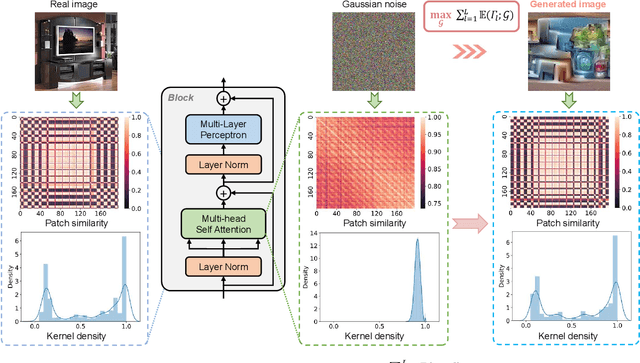


Abstract:Data-free quantization can potentially address data privacy and security concerns in model compression, and thus has been widely investigated. Recently, PSAQ-ViT designs a relative value metric, patch similarity, to generate data from pre-trained vision transformers (ViTs), achieving the first attempt at data-free quantization for ViTs. In this paper, we propose PSAQ-ViT V2, a more accurate and general data-free quantization framework for ViTs, built on top of PSAQ-ViT. More specifically, following the patch similarity metric in PSAQ-ViT, we introduce an adaptive teacher-student strategy, which facilitates the constant cyclic evolution of the generated samples and the quantized model (student) in a competitive and interactive fashion under the supervision of the full-precision model (teacher), thus significantly improving the accuracy of the quantized model. Moreover, without the auxiliary category guidance, we employ the task- and model-independent prior information, making the general-purpose scheme compatible with a broad range of vision tasks and models. Extensive experiments are conducted on various models on image classification, object detection, and semantic segmentation tasks, and PSAQ-ViT V2, with the naive quantization strategy and without access to real-world data, consistently achieves competitive results, showing potential as a powerful baseline on data-free quantization for ViTs. For instance, with Swin-S as the (backbone) model, 8-bit quantization reaches 82.13 top-1 accuracy on ImageNet, 50.9 box AP and 44.1 mask AP on COCO, and 47.2 mIoU on ADE20K. We hope that accurate and general PSAQ-ViT V2 can serve as a potential and practice solution in real-world applications involving sensitive data. Code will be released and merged at: https://github.com/zkkli/PSAQ-ViT.
Patch Similarity Aware Data-Free Quantization for Vision Transformers
Mar 04, 2022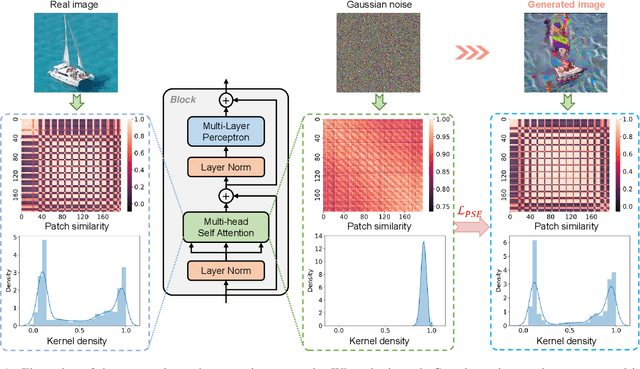
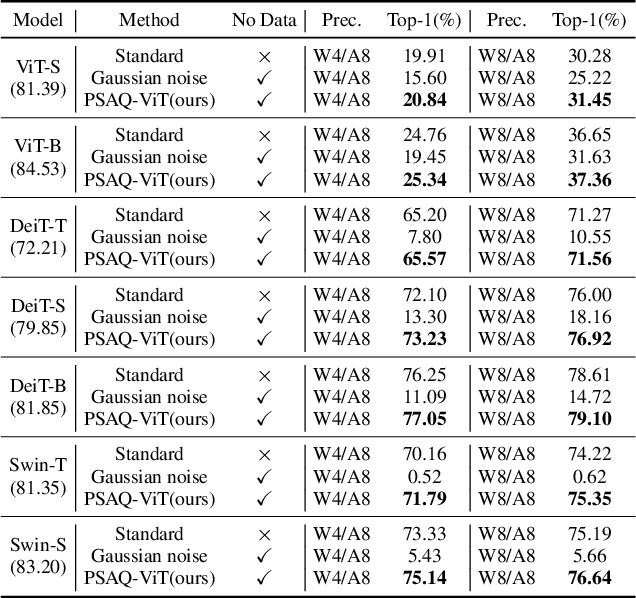
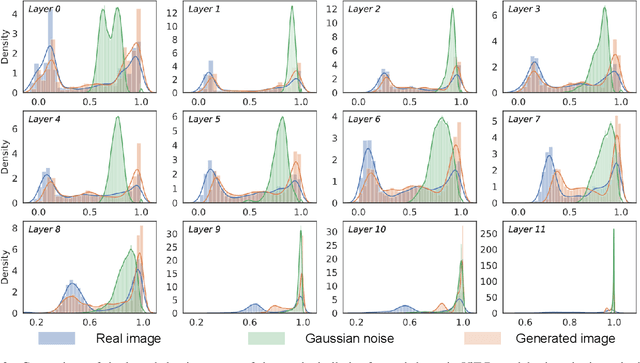
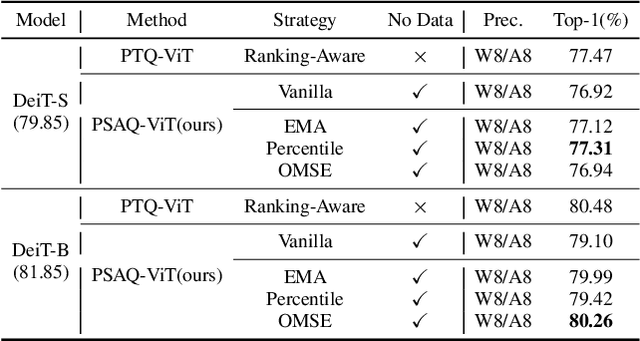
Abstract:Vision transformers have recently gained great success on various computer vision tasks; nevertheless, their high model complexity makes it challenging to deploy on resource-constrained devices. Quantization is an effective approach to reduce model complexity, and data-free quantization, which can address data privacy and security concerns during model deployment, has received widespread interest. Unfortunately, all existing methods, such as BN regularization, were designed for convolutional neural networks and cannot be applied to vision transformers with significantly different model architectures. In this paper, we propose PSAQ-ViT, a Patch Similarity Aware data-free Quantization framework for Vision Transformers, to enable the generation of "realistic" samples based on the vision transformer's unique properties for calibrating the quantization parameters. Specifically, we analyze the self-attention module's properties and reveal a general difference (patch similarity) in its processing of Gaussian noise and real images. The above insights guide us to design a relative value metric to optimize the Gaussian noise to approximate the real images, which are then utilized to calibrate the quantization parameters. Extensive experiments and ablation studies are conducted on various benchmarks to validate the effectiveness of PSAQ-ViT, which can even outperform the real-data-driven methods.
 Add to Chrome
Add to Chrome Add to Firefox
Add to Firefox Add to Edge
Add to Edge